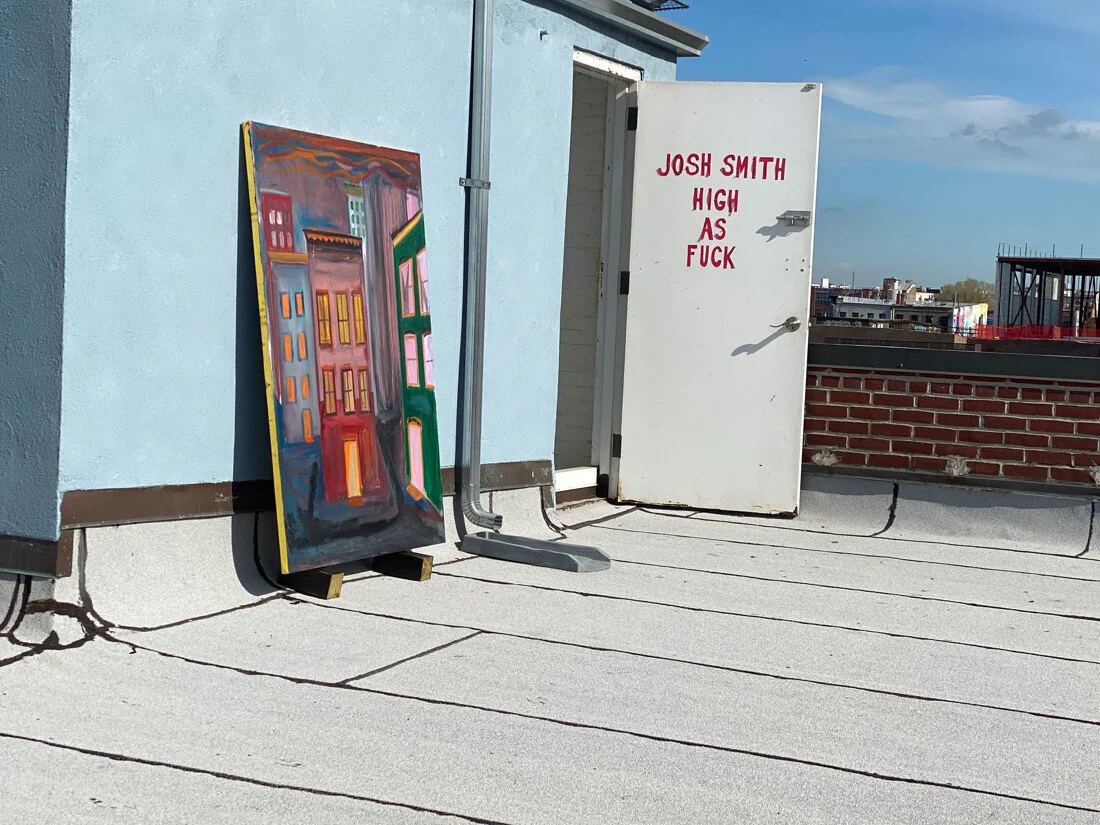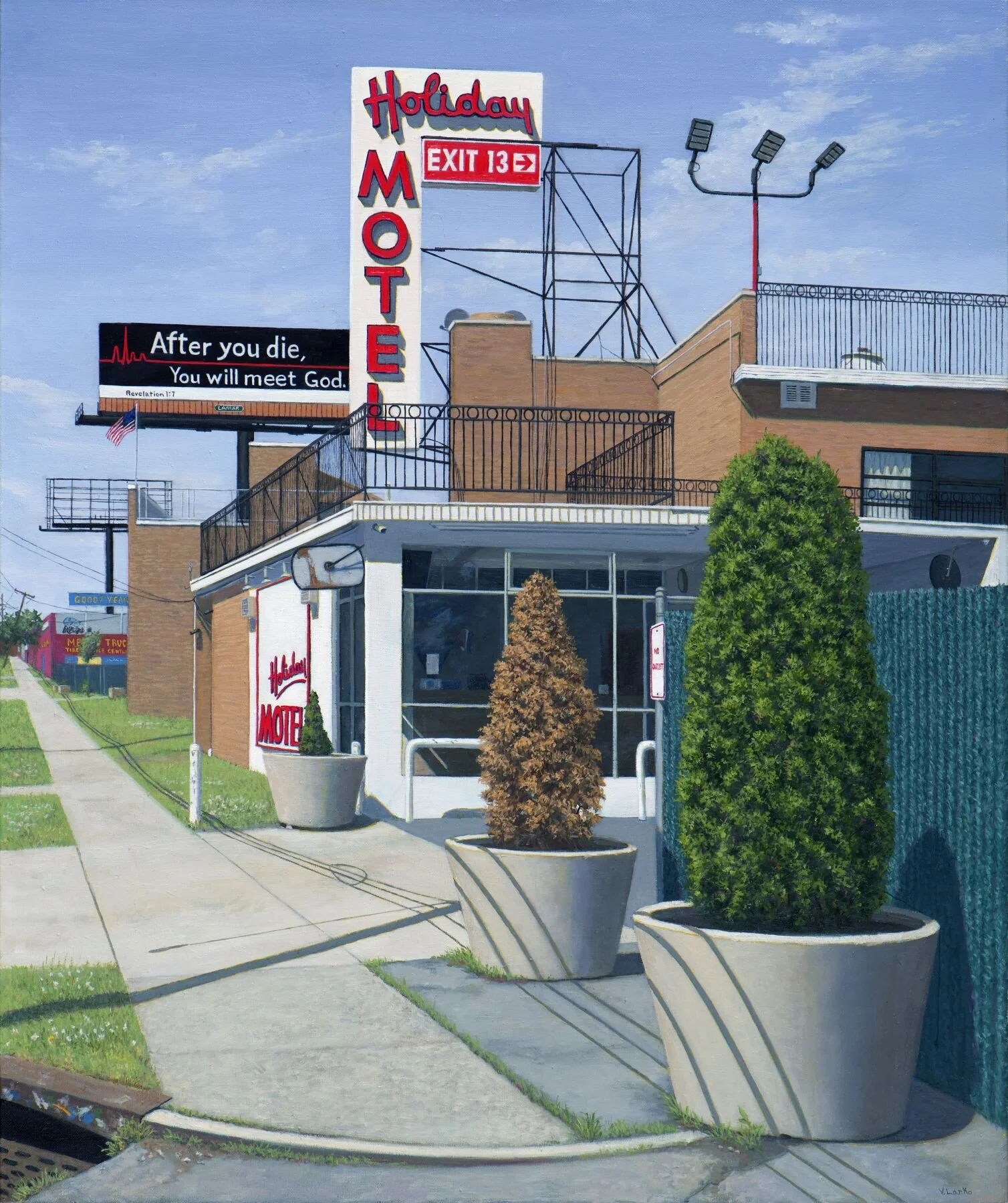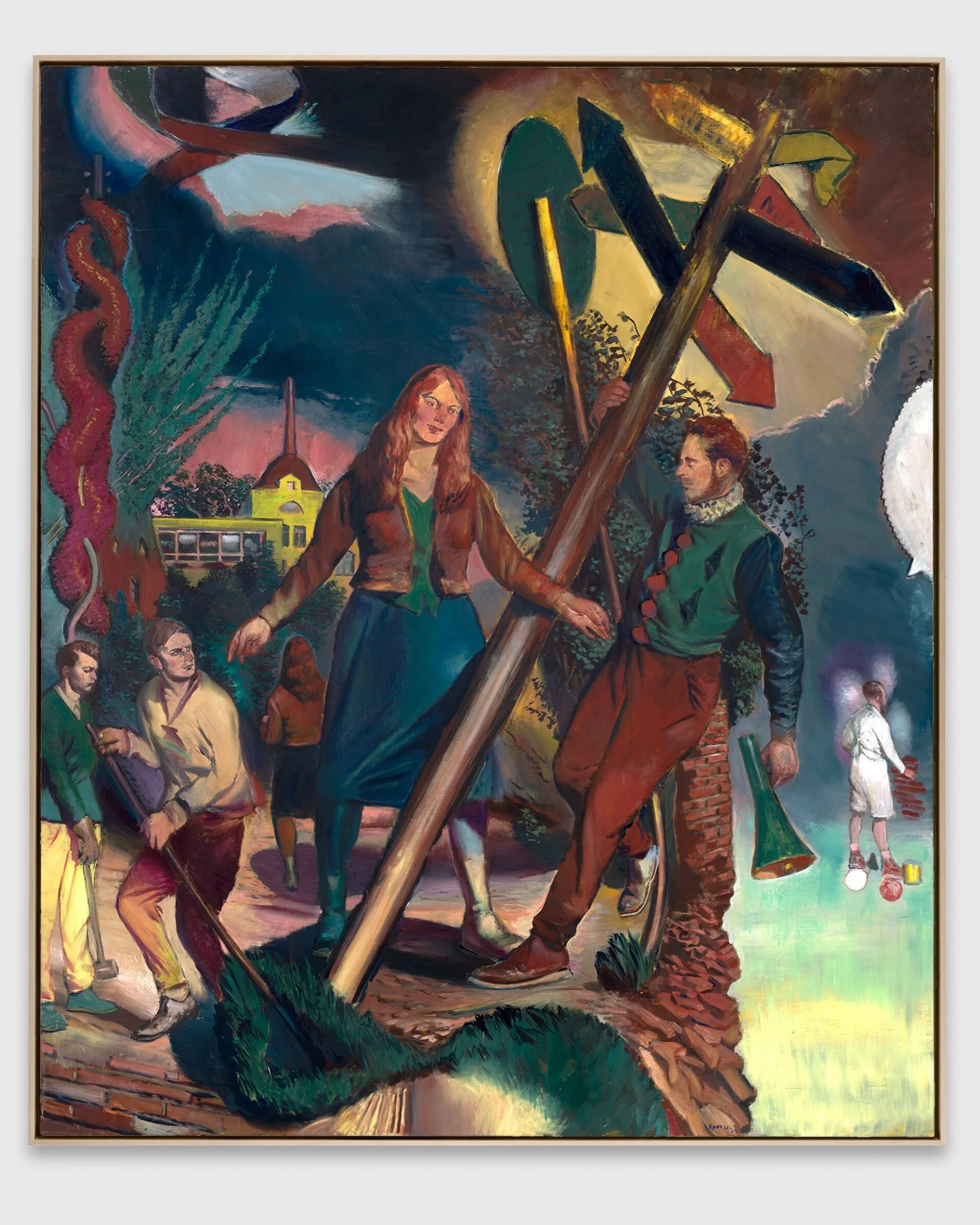Josh Smith
“High As Fuck”
Offsite: Josh Smith Studio Brooklyn, NY
Staged by the artist on the rooftop of his studio in Brooklyn, High As Fuck is an open-air exhibition that is, by default, only accessible online by a homebound audience. The show features a new series of paintings of empty streetscapes. Depicted is Smith’s neighborhood environs as he has experienced them during early morning and nighttime walks around a locked down city. The airplane-less, pollution-free clarity of the open sky, the lack of cars, noise, and people, revealed the nuances of absolutely everything. A whole new world of varied and unique local architecture was instantly revealed to the artist. To Smith, everything suddenly appeared clean and fresh.
The loosely rendered, expressionistic, paintings display an accidental history of both industrial and residential building styles. Smith rendered all this as it felt to him. The city’s clearness revealed unusual angles, which are depicted in lush, deeply layered, atmospheric areas and ribbons of color. The resultant canvases speak to the eerie beauty and serenity of the closed and wounded city.
“ “These are memory paintings but the memory I am painting is now.””
The self-contained nature of life under quarantine lends itself to Smith’s exploration of infinite variation within a determined formal structure. The sense of openness and possibility conveyed in these canvases represents an artistic response to the constraints of the present moment that is at once immediate and hopeful.
Along the front edge of the roof, Smith has installed a sequence of ceramic sculptures. These sculptures depict single figures confined within small, barred prisons. Set roughly six feet between one another, the sculptures playfully reference the mandated distancing allowed between people when out in public. Ceramics have been a part of the artist’s practice throughout his career. For Smith, clay allows for a closer, more tactile engagement, which serves as a counterpart to the projected dimensionality of painting. The caged enclosures, while made in 2013–2014, take on new meaning in the context of the present moment. The ceramic works also stand in as a foil to the expansiveness suggested by the painted streetscapes, and further engage with the dualities of interior and exterior, constraint and possibility, at play in the overall exhibition.
“It seems now is a good time to share the ceramic prisons,” Smith notes. ”These sculptures allude to the sadness in the air, while the paintings, at least for myself, present a contemplative depiction of New York as it currently exists. This time won’t last forever. Abandoned, the feel of this place is strangely hopeful. It is inspiring.”
The exhibition follows in a lineage of artist-initiated projects while displaying a unique and deeply personal approach—a kind of creative gesture that embraces the spirit of the present moment. Precursors of artists experimenting with alternative ways to show their work include Lucio Fontana’s spatialist paintings presented on and around a tree trunk in the garden outside his Milan studio (1955); Manfred Kuttner, Konrad Lueg (later Fisher), Sigmar Polke, and Gerhard Richter’s self-staged Vorgartenaustellung, which they presented on the grounds of Galerie Parnass, Villa Jährling, Wuppertal (1964); and Trisha Brown’s Roof Piece (1971), among other examples.









